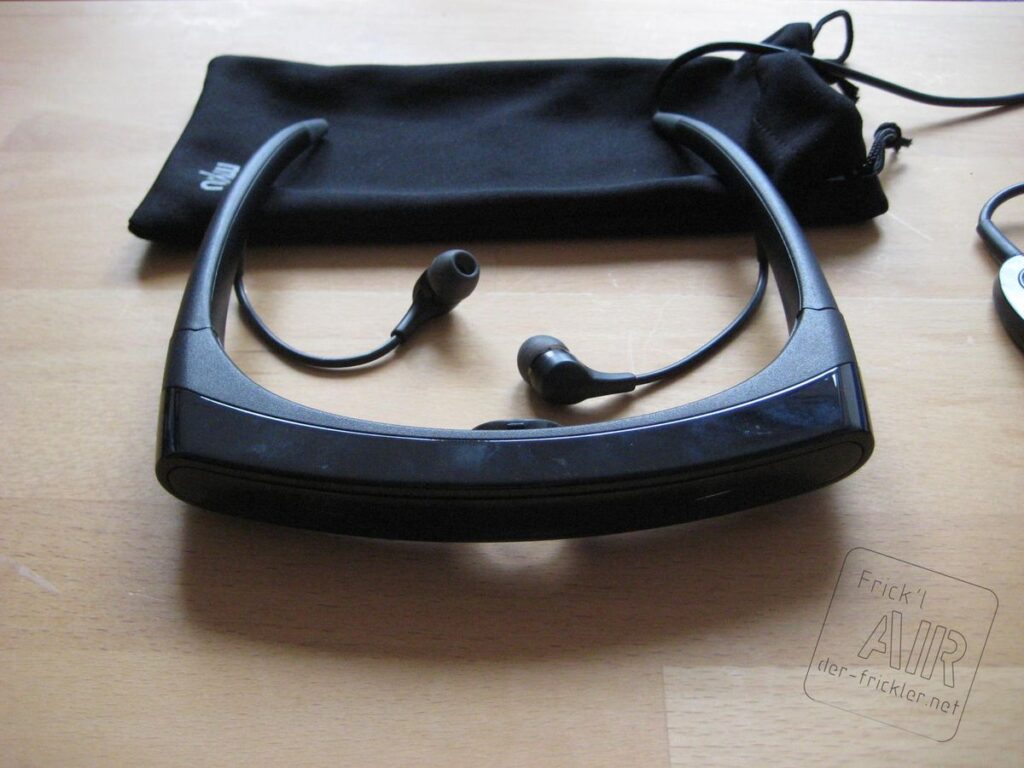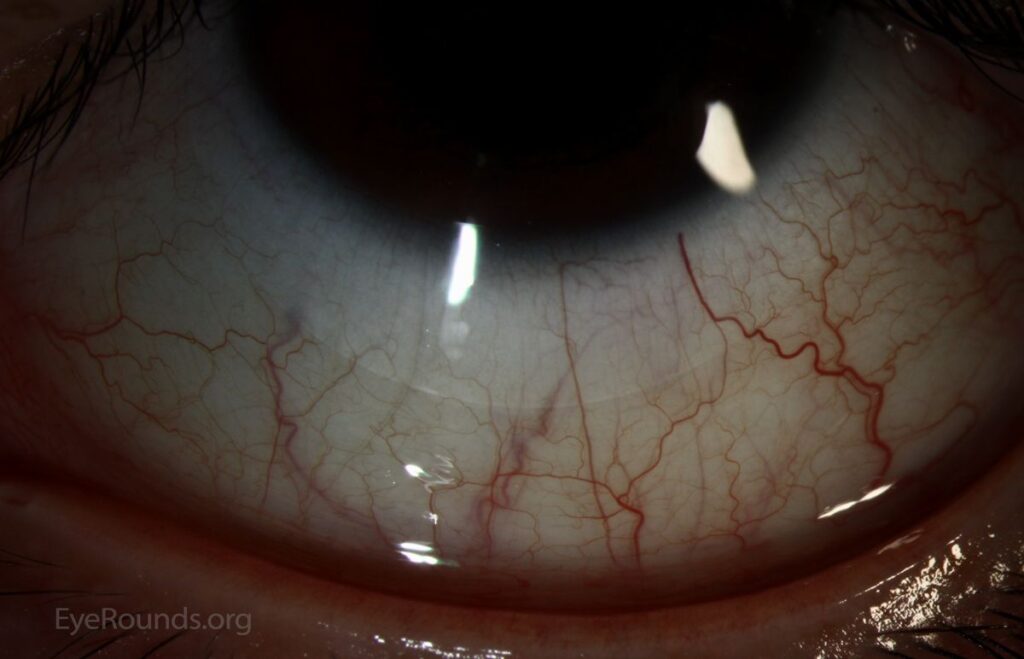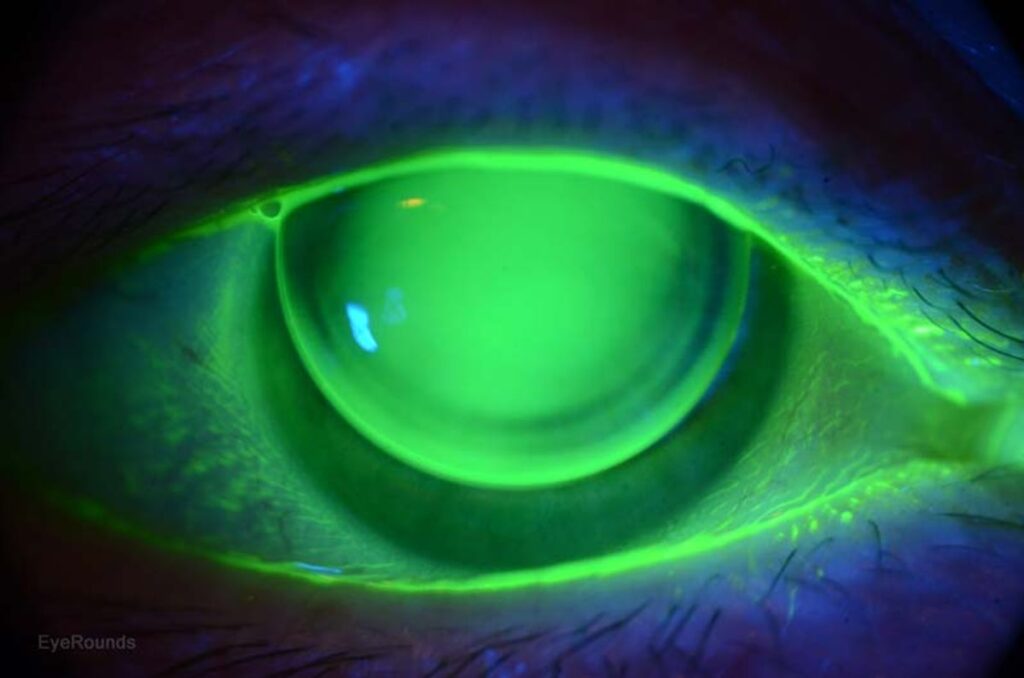The Essential Guide to Prescription Lens Fitting: Ensuring Comfort and Clarity is a comprehensive resource designed to help you navigate the intricacies of choosing and maintaining the perfect eyewear. From understanding your prescription to selecting the right frames and lenses for your needs, this guide covers all aspects of eyewear fitting. It offers professional advice for both glasses and contact lens wearers and provides practical tips for ensuring comfort, visual clarity, and the longevity of your eyewear.
Key Takeaways
- Understanding your prescription is crucial for clear vision; learn to decode the numbers and terms for better lens selection.
- The right frame can enhance comfort and style; consider face shape, measurements, and material when choosing eyewear.
- Proper lens fitting is essential for comfort; explore trial-and-error methods and care tips to find the best fit.
- Contact lens wearers should seek professional guidance for fitting, application instructions, and ongoing support.
- Regular maintenance of your eyewear, including adjustments, cleaning, and timely replacement, is key to lasting comfort and clarity.
Understanding Your Prescription

Decoding the Numbers and Terms
When you receive your eyeglass prescription, you’re essentially looking at a customized roadmap to better vision. It’s a series of numbers and abbreviations that might seem cryptic at first glance, but each element is crucial for creating lenses that address your unique visual needs. Understanding these terms is essential for ensuring your eyewear provides clear and comfortable vision.
Here’s a brief overview of what you might find on your prescription:
- OD and OS: These abbreviations stand for ‘oculus dexter’ and ‘oculus sinister’, which are Latin for right eye and left eye, respectively.
- SPH (Sphere): Indicates the lens power, measured in diopters (D), needed to correct nearsightedness or farsightedness.
- ADD: This number is relevant for those requiring multifocal lenses and represents the additional magnification needed for reading.
Buying prescription eyewear online is made easy with virtual try-on tools, frame measurements, prescription accuracy, home trials, and optometrist consultations. Ensure comfort, style, and vision needs are met.
Diopters are particularly important as they measure the degree of your refractive error. Negative values signify nearsightedness, where distant objects appear blurry, while positive values indicate farsightedness, the difficulty in focusing on close objects. The higher the absolute value, whether negative or positive, the stronger your prescription.
Selecting the Right Lenses
Selecting the right lenses is a critical step in ensuring both comfort and optimal vision. Choosing between eyeglasses and contact lenses is a personal decision that depends on your lifestyle, preferences, and specific vision needs. For instance, contact lenses might be the best option for those with an active lifestyle, offering a wider field of vision and freedom from the constraints of frames.
When considering lens types, it’s important to understand the benefits of different materials and designs. For example, high-quality rigid and soft gas-permeable lenses are recommended for their breathability and comfort. Additionally, smart glasses technology is advancing, with features that must be compatible with mobile and operating systems, offer stable Bluetooth connectivity, and support augmented reality (AR).
The right lens can enhance your visual experience significantly, providing clarity and comfort that aligns with your daily activities.
Here are some considerations when selecting lenses:
- Lens Material: Choose from polycarbonate, high-index, or standard plastic based on durability, weight, and thickness.
- Lens Coatings: Options like anti-reflective, scratch-resistant, and UV coatings can protect your eyes and improve lens performance.
- Prescription Compatibility: Ensure that the lenses you select can accommodate your prescription, especially if you require specialized designs like spiral lens design for improved clarity across distances.
Interpreting Prescriptions for Different Vision Problems
Your vision is unique, and being able to understand your eyeglass prescription is the key to experiencing clear and comfortable eyesight. This guide unveils the meaning behind those cryptic numbers and symbols to help make sense of your personalized prescription. Whether you’re nearsighted, farsighted, or dealing with astigmatism, we’ll decipher your prescription to help you choose the perfect lenses for optimal vision. Say goodbye to visual uncertainty as we help you understand the meaning of your prescription.
Understanding how to interpret an eye prescription is essential when selecting the right eyeglasses or contact lenses. An example eye prescription typically includes various values such as sphere (SPH), cylinder (CYL), axis, and sometimes additional details like add and prism. SPH represents nearsightedness or farsightedness, while CYL and axis deal with astigmatism correction. Add indicates the power for near-vision correction, and prism addresses eye alignment issues. Accurately decoding these values is crucial for achieving the best visual outcome.
Bold is the importance of precision in lens fitting. Advanced fabrication techniques and clinical insights drive lens design evolution for personalized vision enhancement. Optician expertise is crucial for selecting frames that balance prescription power with face shape and design.
Here is a simple breakdown of common prescription terms:
- SPH (Sphere): Indicates the power of the lens needed to correct nearsightedness or farsightedness.
- CYL (Cylinder): Specifies the amount of lens power for astigmatism.
- Axis: Defines the lens meridian that contains no cylinder power to correct astigmatism.
- Add: This number is used for multifocal lenses to indicate the additional magnifying power for close-up work.
- Prism: Prescribed to help with eye alignment problems and is not commonly found in most prescriptions.
The Art of Selecting the Perfect Frame
Considering Face Shape and Frame Styles
Selecting the right frames for your glasses is not just about fashion; it’s about finding the perfect match for your face shape. Different face shapes complement different frame styles, and understanding this can greatly enhance your appearance. For instance, round frames can soften the angles of a square face, while angular frames can bring structure to a rounder face.
Use virtual try-on tools with face shape icon to find frames that enhance your features. Face Shape Finder guides personalized eyewear selection for perfect fit and style online.
When considering frame styles, it’s also important to think about the frame width, temple length, and bridge size. These measurements are crucial for ensuring that your glasses fit comfortably and provide optimal vision. Here’s a quick guide to help you measure your face for these key dimensions:
- Frame Width: Measure the width of your face from temple to temple.
- Temple Length: Measure the length of the arm of the glasses from the frame to the end of the temple.
- Bridge Size: Measure the distance between your eyes to determine the bridge width that will sit comfortably on your nose.
By taking these measurements and considering your face shape, you can confidently select frames that not only align with your personal style but also offer a great fit, enhancing both your visual clarity and comfort.
Measurements for the Ideal Fit
Achieving the perfect fit for your eyewear is not just about style; it’s about comfort and functionality. Properly fitting glasses are crucial for optimal vision and comfort. The key measurements to consider include frame width, temple length, bridge size, and lens height and width. Here’s a quick guide to understanding these measurements:
- Frame Width: The total front width of the frame, ensuring the glasses are not too tight or too loose.
- Temple Length: The length of the arms of the glasses, which should extend comfortably over your ears.
- Bridge Size: The distance between the lenses, which affects how the glasses sit on your nose.
- Lens Height and Width: The size of the lenses themselves, which impacts your field of vision.
Ensuring these measurements align with your facial features will not only provide a comfortable fit but also enhance your visual experience.
Remember, the possibilities for customization are virtually endless. From the nose pads to the temple arms, every aspect of your glasses can be adjusted to suit your unique preferences and facial features. Consult with an optometrist or eyewear specialist to fine-tune these details for the best possible fit.
Material and Design Considerations
When selecting eyewear, the material and design of the frames are as important as the lenses themselves. Lightweight materials such as those used in Lenskart’s Air Collection can make a significant difference in comfort, particularly for those who wear glasses for extended periods. The right material can reduce the strain on your nose and ears, ensuring that your glasses feel almost weightless.
- Alignment: Ensure frames align with your eyes and sit evenly on your face.
- Weight: Opt for lightweight frames to enhance comfort.
- Avoid Pitfalls: Steer clear of frames that sit too low on your nose or have insufficient lens height.
Custom eyewear offers a personalized approach to frame design, material selection, and fit. This bespoke option integrates fashion and function, often utilizing innovative technologies such as 3D printing to create frames that are both stylish and tailored to individual needs.
Remember, the ultimate goal is to find a balance between style, function, and comfort. Frames that are too heavy or poorly aligned can lead to discomfort and may not provide the optimal vision enhancement you need.
Lens Fitting and Comfort
The Importance of Accurate Lens Fitting
Ensuring that your lenses are accurately fitted is not just a matter of comfort; it is essential for maintaining optimal vision and eye health. An improper fit can lead to discomfort, visual disturbances, and even long-term damage to the eyes.
Accurate lens fitting involves several key steps:
- Corneal Topography: Mapping the cornea to determine the precise shape for the lens.
- Lens Parameters: Selecting the correct lens diameter, base curve, and other specifications.
- Trial Fittings: Trying on different lenses to assess comfort and vision quality.
It is crucial to work with a professional who can guide you through the fitting process, ensuring that each aspect of the lens fits your unique eye shape and prescription needs.
Remember, a lens that fits well will provide the best possible vision correction and will be more comfortable to wear throughout the day. Regular follow-ups with your eye care provider are important to maintain the fit and function of your lenses over time.
Trial-and-Error: Finding the Best Lens Type
Finding the perfect lens type is a personalized process that often involves some trial-and-error. The goal is to achieve the best possible balance between vision clarity and comfort. During this phase, you may be provided with trial lenses to test various materials, designs, and brands. This hands-on approach allows you to experience how each lens feels and performs throughout your daily activities.
It’s essential to assess both the vision quality and the comfort level of each trial lens. Pay attention to how the lenses sit on your eyes, their movement, and any sensations of dryness or irritation.
The following list outlines the key steps in the trial lens fitting process:
- Trying different lens types to explore options.
- Assessing vision clarity and comfort with each lens.
- Noting any lens movement and how it affects your experience.
Remember, patience is key during this stage. It may take several attempts to find the lens that fits your eyes perfectly and meets your lifestyle needs. Your eye care professional will be there to guide you through the process, ensuring that you end up with lenses that provide optimal vision and wearability.
Ensuring Comfort with Proper Lens Care
Proper lens care is not only about maintaining the quality and longevity of your lenses but also about ensuring your eyes remain healthy and comfortable. Regular cleaning and appropriate storage are crucial to prevent infections and maintain clear vision. It’s important to follow the specific care instructions provided by your eye care professional to avoid any complications.
To maximize comfort, incorporate lens care into your daily routine. This consistent approach helps to establish good habits and prevents the likelihood of eye irritation or infection.
Here are some general guidelines for lens care:
- Always wash your hands thoroughly before handling your lenses.
- Use only the recommended solutions for cleaning and storing your lenses.
- Replace your lens case every three months to reduce the risk of contamination.
- Follow the recommended lens replacement schedule to ensure your eyes are not exposed to worn-out lenses.
Remember, proper lens care is a small investment in your overall eye health and comfort. If you experience any discomfort or have concerns about your lens care routine, consult your eye care professional immediately.
Professional Guidance for Contact Lens Wearers

Initial Eye Health Assessment
Before selecting the perfect contact lenses, a comprehensive eye health examination is essential. This initial assessment is not just about determining your prescription; it’s a crucial step in ensuring the overall health of your eyes and identifying any potential issues early on.
During the examination, several aspects of your vision and eye health are evaluated:
- Vision Testing: To check your visual acuity and determine prescription needs.
- Eye Health Assessment: To examine the health of the cornea, retina, and other eye structures.
- Lifestyle Discussion: To understand your daily activities and requirements, which influences the choice of contact lenses.
It’s important to remember that regular maintenance and evaluation of personal protective equipment, including eyewear, is crucial for workplace safety.
If any signs of conditions such as diabetic retinopathy are detected, early intervention can be the key to preserving your vision. Don’t compromise on your eye health; ensure you book an appointment with an experienced optometrist for a personalized care experience.
Preparing for Lens Application
Before the actual application of contact lenses, certain preparatory steps are indispensable to ensure a safe and hygienic experience. Proper hand hygiene is the cornerstone of this preparation. It is essential to wash your hands thoroughly with soap and water, followed by drying with a lint-free towel to avoid any particles contaminating the lenses or irritating the eyes.
Gathering all necessary supplies beforehand streamlines the process. This includes having your contact lenses, a clean lens case, the correct lens solution, and a mirror in a well-lit area. Organizing these items ensures an efficient and trouble-free lens application.
Mastery in the art of lens insertion and removal is achieved through practice and adherence to the guidance provided by your optometrist. Gentle and steady movements are crucial during the application.
Following the initial preparation, you will receive comprehensive training on lens handling and care. Scheduled follow-up appointments are crucial to monitor your progress and make any necessary adjustments for optimal comfort and vision.
Instruction and Training for New Wearers
After selecting the perfect contact lenses, the next crucial step is to receive proper instruction and training. Our optometrists will equip you with the knowledge and skills needed to handle your lenses with confidence. You’ll learn everything from lens hygiene to precise insertion and removal techniques.
During these training sessions, you will be guided through:
- Lens Handling and Care: Ensuring you understand the importance of cleanliness and the correct methods for lens maintenance.
- Insertion and Removal: Step-by-step guidance to comfortably put in and take out your lenses.
- Follow-up Appointments: These are essential to monitor your adaptation to the lenses and make any necessary adjustments.
Remember, it’s normal to experience some initial discomfort when wearing contact lenses for the first time. This should diminish as your eyes adjust. However, if you encounter persistent pain or significant discomfort, it’s important to consult your eye care professional immediately.
Adhering to the recommended wear schedule is vital. Start with shorter periods and gradually increase the duration as advised by your eye care professional. This gradual approach helps your eyes adapt to the new lenses, ensuring both comfort and clarity in your vision.
Maintaining Your Eyewear

Routine Adjustments and Repairs
Regular maintenance of your eyewear is essential to ensure they continue to provide the best fit and vision correction. Accurate refraction measurement is crucial for selecting and fitting prescription eyewear, impacting comfort, vision clarity, and overall satisfaction. Factors include lens material, coating, and design.
Making minor adjustments to your frames can make a significant difference in how your glasses fit and feel. This includes tweaking the nose pads, temple corners, and temple ends to achieve the perfect alignment on your face.
Here’s a quick checklist to help you identify which part of your frame may need adjusting:
- Nose pads: Adjust for height and comfort on the nose bridge.
- Temple corner: Modify for a snug fit around the ears.
- Temple end piece: Fine-tune for alignment and stability.
- Temple bend: Ensure the glasses do not slip off.
- Lenses: Check if they need replacing or re-glazing.
Remember, all adjustments should be gentle to avoid damaging your frames. If you’re unsure about making these adjustments yourself, it’s always best to seek professional help.
Cleaning and Care Tips
Proper care and maintenance of your eyewear are crucial for ensuring the longevity and performance of your lenses. Regular cleaning is essential to maintain clarity and prevent infections, especially for contact lens wearers. Here are some tips to keep your lenses in top condition:
- To keep your contact lens case free from contaminants, clean it after each use with sterile solution or hot tap water. Let it air dry completely before reuse.
- Gently rub your contact lenses with your finger in the palm of your hand using the recommended cleaning solution to remove debris or protein buildup.
- Store your contact lenses in a clean lens case filled with fresh solution. Never use tap water or saliva, as they may harbor harmful bacteria.
Remember, preventing eye irritation and infections starts with proper hygiene. Always wash your hands before handling lenses and keep your nails short to avoid scratching your eyes.
By following these simple steps, you can ensure that your lenses remain clean and clear, providing you with optimal vision and comfort. Additionally, for those in hazardous environments, selecting prescription safety glasses that emphasize fit, lens features, coatings, and materials is vital for optimal comfort and protection.
When to Replace Your Glasses or Contacts
Understanding when to replace your glasses or contacts is crucial for maintaining clear vision and eye health. Eyeglasses should be updated if your prescription changes, which can occur more frequently than you might expect. For those under 40, an eye exam every 2 years is recommended, while annual exams are advised for those over 40.
For contact lens wearers, adhering to the replacement schedule is essential. Disposable lenses may need daily replacement, whereas others could last a month or more. The table below outlines typical replacement frequencies:
Always consult with your eye care professional for personalized advice, as wearing lenses past their intended usage can lead to discomfort and eye infections.
In addition to prescription changes and lens schedules, consider the physical condition of your eyewear. Frames may become bent or damaged, and lens coatings can degrade over time. When repairs are no longer cost-effective or cannot restore optimal function, it’s time to invest in a new pair.
Keeping your eyewear in top condition is essential for ensuring clear vision and prolonging the life of your glasses or contacts. For expert tips and personalized advice on maintaining your eyewear, visit our website. We offer a comprehensive guide to help you care for your eyewear effectively. Don’t let scratches or discomfort compromise your sight. Click on the link to learn more and keep your vision sharp!
Conclusion
In summary, the journey to finding the perfect prescription lenses is a blend of art and science. From understanding your unique prescription to selecting the right frames for your face shape, every step is crucial for achieving comfort and clarity. Remember, a proper fit is not just about aesthetics; it’s about ensuring your glasses or contact lenses enhance your vision and feel like a natural extension of yourself. Consult with professionals, be mindful of the details, and don’t hesitate to ask questions or request adjustments. Your eyesight is invaluable, and with the right guidance, you can enjoy the world through a lens of crystal-clear precision.
Frequently Asked Questions
How do I decode the numbers and terms on my eyeglass prescription?
Your eyeglass prescription includes numbers and terms that specify the type of correction needed for your vision. These typically indicate the lens power to correct nearsightedness, farsightedness, or astigmatism. Understanding these details can help you select the right lenses for clear and comfortable vision.
What should I consider when selecting a frame for my glasses?
When choosing a frame, consider your face shape and the frame styles that complement it. Also, ensure the frame size fits well and the material and design align with your lifestyle and preferences for comfort and durability.
Why is accurate lens fitting important?
Accurate lens fitting is crucial for comfort and visual clarity. Ill-fitting lenses can cause discomfort and may not correct your vision properly. A trial-and-error process with different lens types can help find the best fit.
What does the initial eye health assessment for contact lenses involve?
The initial eye health assessment for contact lenses includes a thorough examination of your eye health, determining the appropriate lens type, and providing a personalized prescription. This ensures that the lenses fit well and are comfortable.
How should I maintain my eyewear to ensure longevity?
Maintain your eyewear by regularly cleaning it with appropriate solutions, handling it with care, and storing it properly. Also, schedule routine adjustments and repairs to keep the fit perfect and replace your glasses or contacts as recommended by your eye care professional.
When should I replace my glasses or contact lenses?
You should replace your glasses or contact lenses as prescribed by your eye care professional, typically when your prescription changes, if they become damaged, or as recommended based on the type of lenses you use.

I am a seasoned software engineer with over two decades of experience and a deep-rooted background in the optical industry, thanks to a family business. Driven by a passion for developing impactful software solutions, I pride myself on being a dedicated problem solver who strives to transform challenges into opportunities for innovation.

